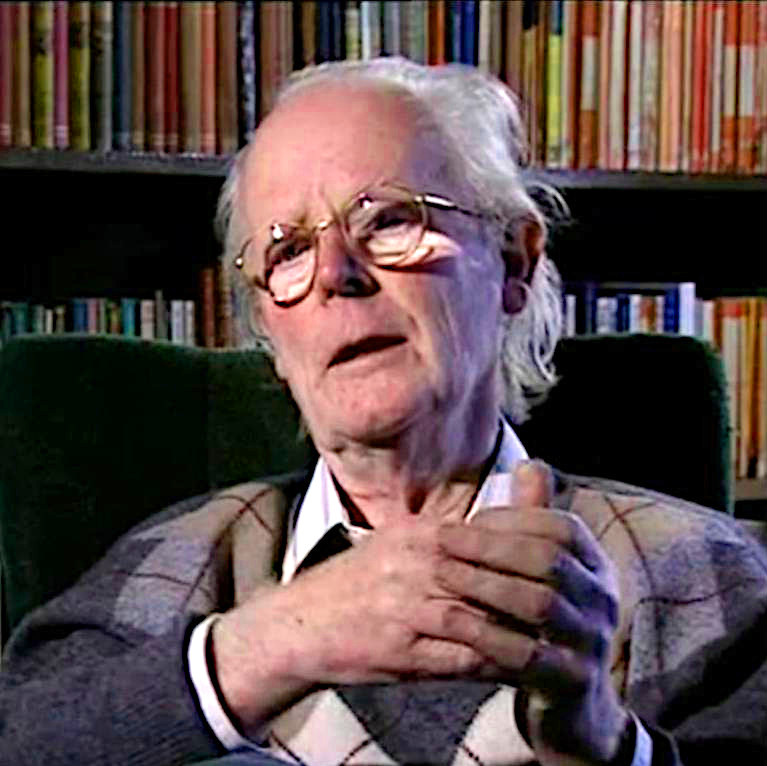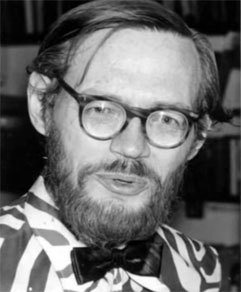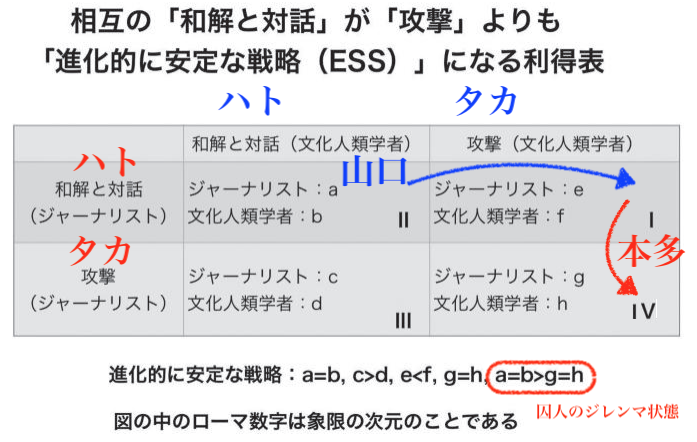
進化的安定戦略
Evolutionarily Stable Strategy, ESS

進化的安定戦略とは、John Maynard Smith & George R. Price (1973)が考案した、生物進化における戦略のことである。進化的安定戦略は、英語で、Evolutionarily Stable Strategy, アクロニムをとり略して ESS と称される。
もし、ある集団のすべての成員が、その戦略を採用する と、他の戦略により侵略・侵入されることのない戦略のことである。そしてその戦略が、〈安定した結果〉(下記)を導くのである。安定化と いっても、それが必ずしも、個体にとって最良になるとは限らない帰結をもたらすこともあることが、ESS理解の重要な鍵になる。
多くの個体が限られた同じ資源を利用する とき、彼らは相互に競争者となる。その個体のとるべき最良の行動とは、他の競争者が何をするのかによっ て決まる。競争によって、さまざまな利得は、頻度に依存的に決まる。そのため、最終的に何が、競争の安定した結果になりうるのかを考える必要があるという のだ。
デイビスら(2015: 129)は、満員の人間が集う人間の音楽コンサートを例にとり、ESSがどのように決まるのかを、わかりやすく説明する。
満員のコンサート会場である。人びとはフ ロアに全員座っている。しかし、観客の一人が立ち上がるとする。そうすると、その後ろの人は舞台をよく みるために立ち上がる。そのようになると、次々と人は立ち上がり、やがて全員が立ち上がる。実際には、成員には「演奏中に立ち上がるべきではない」という 道徳や、そのような逸脱が生じた時に、周囲の人が元の位置に座るように督促するということで、この戦略は採用されない。しかしクラシック音楽の会場ではな く、(最終的にはノリノリになりそれが期待されている)ロック・コンサートの会場ではどうか? このような場合は、座りつづける行動はESSではなく、立 つ行動が(視野を広げるために)個体にとって有益な行動になる。立っている人に対して座っている人は有利ではない。そのようにして、全員が立ち上がると、 誰も座る行動で快適さを享受することができない。これが、先にESSで安定化したことが、集団にとって最良とはならないと言った意味である。再度、全員が 座れば、全員は全体を再度見渡すことが可能になるからである。
ジョン・メイナード・スミス(1982) が示した、もっとも有名な事例は、ハトとタカのゲームである。
《問題》
ある島の鳥は、オスとメスでそれぞれ〈誠 実〉か〈浮気〉かの戦略を選ぶことにする(事例は(逢沢 2003:111-112))。
1)オス、メスともに誠実なら、生涯に平均10羽の子孫を育てることができる。
2)一方だけが浮気なら、浮気側の子孫は20羽、他方は子孫が減って5羽になる。
3)双方とも浮気なら、雛の世話が疎かになり、片方で平均7羽子孫を残すことになる。
| オス(↓)|メス(→) |
誠実(親メス) |
浮気(親メス) |
| 誠実(親オス) |
オス:10羽 メス:10羽 |
オス:5羽 メス:10羽 |
| 浮気(親オス) |
オス:20羽 メス:5羽 |
オス:7羽 メス:7羽 |
相手が誠実の場合は、つねに浮気側は有利 である。しかし同時に、双方が浮気の時は14羽<双方が誠実20羽、となり浮気を損をすることになる。 だからといって誠実戦略をとると、相手が浮気の場合は、損をすることになる。つまり自分だけが得をしたいと思って、相手につねに同じ態度をとりづけると、 両方が損をしてしまうことになる。これらは囚人のジレンマとおなじような循環に陥る。
誠実な遺伝子が残れば、それはますます誠
実な遺伝子の頻度を高めることになる。
★ジョン・メイナード・スミス
| John Maynard Smith[a]
FRS (6 January 1920 – 19 April 2004) was a British theoretical and
mathematical evolutionary biologist and geneticist.[1] Originally an
aeronautical engineer during the Second World War, he took a second
degree in genetics under the well-known biologist J. B. S. Haldane.
Maynard Smith was instrumental in the application of game theory to
evolution with George R. Price, and theorised on other problems such as
the evolution of sex and signalling theory. |
ジョン・メイナード・スミス[a] FRS(1920年1月6日 -
2004年4月19日)は、イギリスの理論的・数理的進化生物学者、遺伝学者である[1]。もともとは第二次世界大戦中の航空技師であったが、有名な生物
学者J・B・S・ハルデンの下で遺伝学の第二学位を取得した。メイナード・スミスは、ジョージ・R・プライスとともにゲーム理論の進化への応用に貢献し、
性の進化やシグナル伝達理論など、他の問題についても理論化した。 |
 Biography BiographyEarly years John Maynard Smith was born in London, the son of the surgeon Sidney Maynard Smith, but following his father's death in 1928, the family moved to Exmoor, where he became interested in natural history. Quite unhappy with the lack of formal science education at Eton College, Maynard Smith took it upon himself to develop an interest in Darwinian evolutionary theory and mathematics, after having read the work of old Etonian J. B. S. Haldane, whose books were in the school's library despite the bad reputation Haldane had at Eton for his communism. He became an atheist at age 14.[2] On leaving school, Maynard Smith joined the Communist Party of Great Britain and started studying engineering at Trinity College, Cambridge.[3] When the Second World War broke out in 1939, he defied his party's line and volunteered for service. He was rejected, however, because of poor eyesight and was told to finish his engineering degree, which he did in 1941. He later quipped that "under the circumstances, my poor eyesight was a selective advantage—it stopped me getting shot". The year of his graduation, he married Sheila Matthew, and they later had two sons and one daughter (Tony, Carol, and Julian). Between 1942 and 1947, he applied his degree to military aircraft design. Second degree Maynard Smith, having decided that aircraft were "noisy and old-fashioned",[4] then took a change of career, entering University College London to study fruit fly genetics under Haldane.[3] After graduating he became a lecturer in zoology at his alma mater between 1952 and 1965, where he directed the Drosophila lab and conducted research on population genetics. He published a popular Penguin book, The Theory of Evolution, in 1958 (with subsequent editions in 1966, 1975, 1993). He became gradually less attracted to communism and became a less active member, finally leaving the party in 1956[5] like many other intellectuals, after the Soviet Union brutally suppressed the Hungarian Revolution (Haldane had left the party in 1950 after becoming similarly disillusioned). He also admitted that a research program in evolutionary biology explicitly informed by Marxism seemed to bear little fruit.[6] University of Sussex In 1962 he was one of the founding members of the University of Sussex and was a dean between 1965 and 1985. He subsequently became a professor emeritus. Prior to his death the building housing much of life sciences at Sussex was renamed the John Maynard Smith Building in his honour. |
 バイオグラフィー バイオグラフィー生い立ち ジョン・メイナード・スミスは外科医シドニー・メイナード・スミスの息子としてロンドンで生まれたが、1928年の父の死後、一家はエクスムーアに移り住 み、そこで自然史に興味を持つようになった。イートン・カレッジで正式な科学教育が受けられなかったことを不満に思っていたメイナード・スミスは、ダー ウィンの進化論と数学に興味を持った。彼は14歳で無神論者になった[2]。 1939年に第二次世界大戦が勃発すると、彼は党の方針に背き、兵役に志願した。しかし、視力が悪いという理由で拒否され、工学の学位を取得するように言 われ、1941年に取得した。後に彼は、「あの状況下では、視力の悪さは選択的に有利だった。卒業の年にシーラ・マシューと結婚し、後に2人の息子と1人 の娘(トニー、キャロル、ジュリアン)をもうけた。1942年から1947年にかけて、彼は学位を軍用機の設計に応用した。 第二の学位 卒業後、1952年から1965年まで母校の動物学講師となり、ショウジョウバエの研究室を率い、集団遺伝学の研究を行った。1958年にペンギンの人気 本『進化論』を出版(その後、1966年、1975年、1993年に版を重ねる)。 彼は次第に共産主義に魅力を感じなくなり、活動的な党員ではなくなり、最終的にはソ連がハンガリー革命を残酷に弾圧した後、他の多くの知識人と同様に 1956年に離党した[5](ハルデーンも同様に幻滅して1950年に離党している)。彼はまた、マルクス主義に明確に影響を受けた進化生物学の研究プロ グラムがほとんど実を結ばなかったようだと認めている[6]。 サセックス大学 1962年にサセックス大学の創立メンバーの一人となり、1965年から1985年まで学部長を務めた。その後、名誉教授となる。彼の死に先立ち、サセッ クス大学の生命科学の大部分を収容する建物は、彼に敬意を表してジョン・メイナード・スミス・ビルディングと改名された。 |
| Evolution and the Theory of Games In 1973 Maynard Smith formalised a central concept in evolutionary game theory called the evolutionarily stable strategy,[7] based on a verbal argument by George R. Price. This area of research culminated in his 1982 book Evolution and the Theory of Games. The Hawk-Dove game is arguably his single most influential game theoretical model. He was elected a Fellow of the Royal Society in 1977. In 1986 he was awarded the Darwin Medal. Evolution of sex and other major transitions in evolution Maynard Smith published a book titled The Evolution of Sex which explored in mathematical terms, the notion of the "two-fold cost of sex". During the late 1980s he also became interested in evolutionary transitions in individuality (ETIs) and worked with the evolutionary biologist Eörs Szathmáry.[3] Together they wrote an influential 1995 book The Major Transitions in Evolution, a seminal work which continues to contribute to ongoing issues in evolutionary biology.[8][9] A popular science version of the book, The Origins of Life: From the birth of life to the origin of language, was published in 1999. In 1991 he was awarded the Balzan Prize for genetics and evolution "for his powerful analysis of evolutionary theory and of the role of sexual reproduction as a critical factor in evolution and in the survival of species; for his mathematical models applying the theory of games to evolutionary problems" (motivation of the Balzan General Prize Committee). In 1995 he was awarded the Linnean Medal by the Linnean Society and in 1999 he was awarded the Crafoord Prize jointly with Ernst Mayr and George C. Williams. In 2001 he was awarded the Kyoto Prize. In his honour the European Society for Evolutionary Biology has an award for extraordinary young evolutionary biology researchers named The John Maynard Smith Prize. Animal Signals His final book, Animal Signals, co-authored with David Harper, on signalling theory was published in 2003.[3] Death He died on 19 April 2004 sitting in a chair at home, surrounded by books. He was survived by his wife Sheila and their children. Controversy Another evolutionary biologist, William Donald Hamilton, harboured a grievance against Maynard Smith for his handling of an article that Hamilton submitted to The Journal of Theoretical Biology in 1963, which was eventually published as two papers in July 1964.[10][11] Maynard Smith acted as a reviewer of the paper after two other reviewers had been unable to understand it, and requested that Hamilton revise it into two parts due to concerns about its accessibility, later describing it as "deeply obscure".[11][12] In March 1964, Maynard Smith published the article "Group Selection and Kin selection" in Nature, which covered concepts from Hamilton's article.[13] Although Maynard Smith cited an earlier paper by Hamilton published in the American Naturalist, Hamilton felt Maynard Smith had not given him sufficient credit.[10][11] Hamilton also objected to an anecdote included by Maynard Smith in a review published in the New Scientist in 1976 which implied Maynard Smith's mentor Haldane had understood the concept of Hamilton's inclusive fitness in the 1950s.[11][12] Hamilton replied to the review suggesting that the anecdote was false, but later apologised to Maynard Smith for having doubted it.[10][11] |
進化とゲーム理論 1973年、メイナード・スミスは、ジョージ・R・プライスによる口頭での議論に基づいて、進化的に安定な戦略[7]と呼ばれる進化ゲーム理論の中心的な 概念を定式化した。この研究領域は、1982年に出版された『進化とゲームの理論』に結実した。鷹と鳩のゲームは、間違いなく彼の最も影響力のあるゲーム 理論モデルである。 1977年に英国王立協会フェローに選出。1986年にはダーウィン・メダルを受賞。 性の進化と進化におけるその他の主要な変遷 メイナード・スミスは『セックスの進化』という本を出版し、「セックスの二重コスト」という概念を数学的に探求した。1980年代後半には、個体性の進化 的遷移(ETI)にも興味を持ち、進化生物学者エーシュ・サトマーリー(Eörs Szathmáry)と共同研究を行った。[3] 二人は1995年に影響力のある著書『進化における主要な遷移』を執筆し、進化生物学における現在進行形の問題に貢献し続けている代表的な著作となった [8][9]: 生命の誕生から言語の起源まで)が1999年に出版された。 1991年、バルザン賞(遺伝学・進化学部門)を受賞。「進化論と、進化と種の存続における重要な要因としての有性生殖の役割に関する力強い分析、および ゲーム理論を進化問題に応用した数学的モデルに対して」(バルザン賞委員会の動機)。1995年にはリンネ協会からリンネ・メダルを授与され、1999年 にはエルンスト・マイヤー、ジョージ・C・ウィリアムズと共同でクラフォード賞を受賞。2001年には京都賞を受賞。 彼の功績を称え、ヨーロッパ進化生物学会は、並外れた進化生物学の若手研究者に贈る賞「ジョン・メイナード・スミス賞」を設けている。 アニマル・シグナル 2003年、デビッド・ハーパーとの共著でシグナル伝達理論に関する最後の著書『Animal Signals』が出版された[3]。 死去 2004年4月19日、自宅の椅子に座り、本に囲まれながら死去。遺族は妻のシーラと子供たち。 論争 もう一人の進化生物学者であるウィリアム・ドナルド・ハミルトンは、ハミルトンが1963年に『理論生物学ジャーナル』誌に投稿し、最終的に1964年7 月に2つの論文として出版された論文の扱いについて、メイナード・スミスに不満を抱いていた。 10][11]メイナード・スミスは、他の2人の査読者がその論文を理解することができなかった後に査読者を務め、そのアクセシビリティに関する懸念のた めにハミルトンに論文を2つの部分に修正するように要求し、後にそれを「深く曖昧」であると記述した[11][12]。1964年3月、メイナード・スミ スは、ハミルトンの論文の概念をカバーする論文「グループ選択とキン選択」をネイチャー誌に発表した[13]。 [13]メイナード・スミスはアメリカン・ナチュラリスト誌に掲載されたハミルトンの先行論文を引用していたが、ハミルトンはメイナード・スミスが彼に十 分な謝意を与えていないと感じていた。 [10][11] ハミルトンはまた、1976年に『ニュー・サイエンティスト』誌に掲載されたレビューの中で、メイナード・スミスの師であるハルデインが1950年代にハ ミルトンの包括的適合性の概念を理解していたことを示唆する逸話がメイナード・スミスによって含まれていたことに異議を唱えていた。 |
| Maynard Smith, J. (1958). The
Theory of Evolution. London, Penguin Books. ISBN 0-14-020433-4 1993 edn ISBN 0-521-45128-0 Maynard Smith, J. (1968) Mathematical Ideas in Biology. Cambridge University Press. ISBN 0-521-07335-9[18] Maynard Smith, J. (1972) On Evolution. Edinburgh University Press. ISBN 0-85224-223-9 Maynard Smith, J.; Price, G.R. (1973). "The logic of animal conflict". Nature. 246 (5427): 15–18. Bibcode:1973Natur.246...15S. doi:10.1038/246015a0. S2CID 4224989. Maynard Smith, J. (1974b) Models in Ecology. Cambridge University Press. ISBN 0-521-20262-0 Maynard Smith, J. (1978d) The Evolution of Sex. Cambridge University Press. ISBN 0-521-29302-2 Maynard Smith, J. (ed.) (1981d) Evolution Now. London, Macmillan. ISBN 0-7167-1426-4 Maynard Smith, J. (1982d) Evolution and the Theory of Games. Cambridge University Press. ISBN 0-521-28884-3 Maynard Smith, J. (1986b) The Problems of Biology. Oxford: Oxford University Press. ISBN 0-19-289198-7 Maynard Smith, J. (1988a) Did Darwin Get it Right?: Essays on Games, Sex and Evolution. London, Chapman & Hall. ISBN 0-412-03821-8 Maynard Smith, J. (1989a) Evolutionary Genetics. Oxford: Oxford University Press. ISBN 0-19-850231-1 Maynard Smith, J. and Szathmáry, E. (1997) The Major Transitions in Evolution. New York: Oxford University Press. ISBN 0-19-850294-X Maynard Smith, J. and Szathmáry, E. (1999) The Origins of Life: From the Birth of Life to the Origin of Language. Oxford: Oxford University Press. ISBN 0-19-286209-X Maynard Smith, J. and Harper, D. (2003) Animal Signals. Oxford University Press. ISBN 0-19-852685-7[19] |
メイナード・スミス、J. (1958年)。『進化論』。ロンドン、ペンギンブックス。ISBN 0-14-020433-4 1993年版 ISBN 0-521-45128-0 メイナード・スミス、J. (1968) 『生物学における数学的発想』ケンブリッジ大学出版局。ISBN 0-521-07335-9[18] メイナード・スミス、J. (1972) 『進化について』エディンバラ大学出版局。ISBN 0-85224-223-9 メイナード=スミス、J.; プライス、G.R. (1973). 「動物の闘争の論理」. Nature. 246 (5427): 15–18. Bibcode:1973Natur.246...15S. doi:10.1038/246015a0. S2CID 4224989. メイナード=スミス、J. (1974b) 『生態学におけるモデル』ケンブリッジ大学出版局。ISBN 0-521-20262-0 メイナード=スミス、J. (1978d) 『性の進化』ケンブリッジ大学出版局。ISBN 0-521-29302-2 メイナード=スミス、J.(編)(1981d)『進化論の現在』ロンドン、マクミラン社。ISBN 0-7167-1426-4 メイナード=スミス、J.(1982d)『進化論とゲーム理論』ケンブリッジ大学出版。ISBN 0-521-28884-3 メイナード・スミス、J. (1986b) 『生物学の問題』オックスフォード:オックスフォード大学出版局。ISBN 0-19-289198-7 メイナード・スミス、J. (1988a) 『ダーウィンは正しかったのか?:ゲーム、セックス、進化に関するエッセイ』ロンドン、チャップマン・アンド・ホール。ISBN 0-412-03821-8 メイナード・スミス、J. (1989a) 『進化遺伝学』。オックスフォード:オックスフォード大学出版局。ISBN 0-19-850231-1 メイナード・スミス、J.、サトマーリー、E. (1997) 『進化における主要な転換』。ニューヨーク:オックスフォード大学出版局。ISBN 0-19-850294-X メイナード・スミス、J.、サスマリー、E. (1999) 『生命の起源:生命の誕生から言語の起源まで』オックスフォード:オックスフォード大学出版局。ISBN 0-19-286209-X メイナード=スミス、J.、ハーパー、D. (2003) 『動物の合図』オックスフォード大学出版局。ISBN 0-19-852685-7[19] |
| https://en.wikipedia.org/wiki/John_Maynard_Smith |
|
 George Robert Price (October 16,
1922 – January 6, 1975) was an American population geneticist. Price is
often noted for his formulation of the Price equation in 1967. George Robert Price (October 16,
1922 – January 6, 1975) was an American population geneticist. Price is
often noted for his formulation of the Price equation in 1967.Originally a physical chemist and later a science journalist, he moved to London in 1967, where he worked in theoretical biology at the Galton Laboratory, making three important contributions: first, rederiving W.D. Hamilton's work on kin selection with the new Price equation that vindicated group selection; second, introducing (with John Maynard Smith) the concept of the evolutionarily stable strategy (ESS), a central concept in game theory; and third, formalizing Fisher's fundamental theorem of natural selection. Price converted to Christianity and gave all his possessions to the poor. Price grew depressed in the setting of thyroid disease[1] and non-compliance with his medications, and committed suicide. |
 ジョージ・ロバート・プライス(1922年10月16日-1975年1
月6日)はアメリカの集団遺伝学者。1967年にプライス方程式を提唱したことで知られる。 ジョージ・ロバート・プライス(1922年10月16日-1975年1
月6日)はアメリカの集団遺伝学者。1967年にプライス方程式を提唱したことで知られる。第一に、W.D.ハミルトンの血縁淘汰に関する研究を、集団淘汰の正当性を証明する新しいプライス方程式で再創造したこと、第二に、ゲーム理論の中心的概 念である進化的に安定な戦略(ESS)の概念を(ジョン・メイナード・スミスとともに)導入したこと、第三に、フィッシャーの自然淘汰の基本定理を定式化 したことである。 プライスはキリスト教に改宗し、全財産を貧しい人々に寄付した。プライスは甲状腺疾患[1]と薬の不服従のためにうつ病を発症し、自殺した |
| Early life Price was born in 1922 in the U.S. state of New York.[2] His father, an electrician, died when Price was four. His mother was a former theater actress, and the family struggled through the Great Depression.[3] Price attended Birch Wathen School[4] followed by Stuyvesant High School in New York. He graduated with a degree in chemistry from University of Chicago in 1943 and received his doctorate in the subject from the same institution in 1946.[3] In 1947 he married Julia Madigan, but their relationship was contentious as George was a strong atheist while his wife was a practicing Roman Catholic.[3] They divorced in 1955, having had two daughters, Annamarie and Kathleen. |
生い立ち プライスは1922年、アメリカ・ニューヨーク州で生まれた[2]。電気技師の父はプライスが4歳の時に死去。母親は元劇団女優で、一家は大恐慌の中で苦 労した[3]。 プライスはバーチ・ワッセン・スクール[4]に通い、その後ニューヨークのスタイヴェサント高校を卒業。1943年にシカゴ大学で化学の学位を取得し、 1946年に同大学で化学の博士号を取得した[3]。 1947年、彼はジュリア・マディガンと結婚したが、ジョージが強い無神論者であったのに対し、妻はローマン・カトリックを信仰していたため、2人の関係 は対立した[3]。 1955年、2人の娘アナマリーとキャスリーンをもうけた2人は離婚した。 |
| Career Early career Price was a member of the Manhattan Project as a chemist looking into the characteristics of plutonium-235. Between 1946 and 1948, he was an instructor in chemistry at Harvard University and consultant to Argonne National Laboratory. Later, he took a position at Bell Laboratories to work on the chemistry of transistors.[4] He then worked as a research associate in medicine at the University of Minnesota, working on, among other things, fluorescence microscopy and liver perfusion. In 1955 and 1956, he published two papers in the journal Science criticizing the pseudoscientific claims of extrasensory perception.[5][6] Continuing with science journalism, Price tried to write a book titled No Easy Way about the United States' Cold War with the Soviet Union and the People's Republic of China, but complained that "the world kept changing faster than I could write about it", and so the book was never finished. From 1961 to 1967, Price was employed by IBM as a consultant on graphic data processing. In 1966, he was treated for thyroid cancer, but the operation to remove the tumour left his shoulder partially paralysed and left him reliant on thyroxine medication. With the money from his medical insurance, he moved to the United Kingdom to start a new life in November 1967. In Britain W.D. Hamilton failed to recall when Price first contacted him, but says Price had read Hamilton's 1964 papers on kin selection,[7][8] and with no training in population genetics or statistics devised the Price equation,[9] a covariance equation that generated the change in allele frequency of a population.[10] Although the first part of the equation had previously been derived by Alan Robertson[11] and C. C. Li,[12] its second component allowed it to be applied to all levels of selection, meiotic drive, traditional natural selection with an extension into inclusive fitness and group selection. Conversion to Christianity On 6 June 1970,[4] Price had a religious experience and became an ardent scholar of the New Testament. He believed that there had been too many coincidences in his life. In particular, he wrote a lengthy essay titled The Twelve Days of Easter, arguing that the calendar of events surrounding Jesus of Nazareth's death in Easter Week was actually slightly longer. Later he turned away from Biblical scholarship and instead dedicated his life to community work, helping the needy of North London. Other work in evolutionary theory Price developed a new interpretation of Fisher's fundamental theorem of natural selection, the Price equation, which has now been accepted as the best interpretation of a formerly enigmatic result.[9] He wrote what is still widely held to be the best mathematical, biological and evolutionary representation of altruism. He also pioneered the application of game theory to evolutionary biology, in a co-authored 1973 paper with John Maynard Smith.[13] Furthermore, Price reasoned that in the same way as an organism may sacrifice itself and further its genes (altruism) an organism may sacrifice itself to eliminate others of the same species if it enabled closely related organisms to better propagate their related genes. This negative altruism was described in a paper published by W. D. Hamilton and is termed Hamiltonian spite. Price's 'mathematical' theory of altruism reasons that organisms are more likely to show altruism toward each other as they become more genetically similar to each other. Thus, in a species that requires two parents to reproduce, an organism is most likely to show altruistic behavior to a biological parent, full sibling, or direct offspring. The reason for this is that each of these relatives' genetic makeup contains (on average in the case of siblings) 50% of the genes that are found in the original organism. So if the original organism dies as a result of an altruistic act it can still manage to propagate its full genetic heritage as long as two or more of these close relatives are saved. Consequently, an organism is less likely to show altruistic behavior to a biological grandparent, grandchild, aunt/uncle, niece/nephew or half-sibling (each carry one-fourth of the genes found in the original organism); and even less likely to show altruism to a first cousin (carrying one-eighth of the genes found in the original organism). The theory then asserts that the further genetically removed two organisms are from each other, the less likely they are to show altruism to each other. Helping the homeless Price grew increasingly depressed by the implications of his equation. As part of an attempt to prove his theory right or wrong, he began showing an ever-increasing amount (in both quality and quantity) of random kindness to complete strangers. In this way, he dedicated the latter part of his life to helping the homeless, often inviting homeless people to live in his house. Sometimes, when the people in his house became a distraction, he slept in his office at the Galton Laboratory. He also gave up everything to help alcoholics; yet as he helped them steal his belongings, he increasingly fell into depression.[14][15] He was eventually evicted from his rented house owing to a construction project in the area, making him unhappy because he could no longer provide housing for the homeless. He moved to various squats in the North London area, and became depressed over Christmas, 1974.[16] |
キャリア 初期のキャリア プルトニウム235の特性を研究する化学者としてマンハッタン計画に参加。1946年から1948年にかけては、ハーバード大学で化学の教官を務め、アル ゴンヌ国立研究所のコンサルタントを務めた。その後、ベル研究所でトランジスタの化学の研究に従事した[4]。その後、ミネソタ大学で医学の研究員とし て、蛍光顕微鏡や肝臓灌流などの研究に従事した。1955年と1956年には、『サイエンス』誌に、超感覚的知覚に関する疑似科学的主張を批判する2本の 論文を発表した[5][6]。 科学ジャーナリズムを続けていたプライスは、アメリカのソビエト連邦と中華人民共和国との冷戦について『No Easy Way』という本を書こうとしたが、「世界は私が書くよりも早く変化し続けている」と不満を漏らし、その本は完成しなかった。 1961年から1967年まで、プライスはグラフィック・データ処理のコンサルタントとしてIBMに雇われた。1966年、彼は甲状腺癌の治療を受けた が、腫瘍を摘出する手術で肩の一部が麻痺し、サイロキシン製剤に頼ることになった。1967年11月、医療保険で得た資金で英国に渡り、新たな生活を始め た。 イギリスにて W.D.ハミルトンはプライスが最初に接触してきた時期を覚えていないが、プライスは1964年にハミルトンが発表した血縁淘汰に関する論文を読んでおり [7][8]、集団遺伝学や統計学の訓練を受けていなかったため、集団の対立遺伝子頻度の変化を生み出す共分散方程式であるプライス方程式[9]を考案し たと述べている[10]。 [10]この方程式の最初の部分はアラン・ロバートソン[11]とC.C.リー[12]によって以前に導かれていたが、その2番目の構成要素によって、す べてのレベルの選択、減数分裂による駆動、包括的フィットネスと集団選択への拡張を伴う伝統的な自然選択に適用することが可能になった。 キリスト教への改宗 1970年6月6日、プライスは宗教的体験をし、新約聖書の熱心な学者になった[4]。彼は、自分の人生には偶然が多すぎると考えていた。特に、『イース ターの12日間』と題する長文のエッセイを書き、イースター週にナザレのイエスが死ぬまでの出来事は、実際にはもう少し長かったと主張した。その後、彼は 聖書学から遠ざかり、代わりに北ロンドンの貧しい人々を助けるコミュニティ活動に生涯を捧げた。 進化論におけるその他の研究 プライスは、フィッシャーの自然淘汰の基本定理の新しい解釈であるプライス方程式を開発した。さらに、プライスは、ある生物が自己を犠牲にしてその遺伝子 を促進するのと同じように(利他主義)、近縁の生物がその近縁の遺伝子をよりよく伝播させることができるのであれば、生物は自己を犠牲にして同じ種の他者 を排除することができると推論した[13]。この負の利他主義は、W・D・ハミルトンによって発表された論文に記述されており、ハミルトニアン・スパイト と呼ばれている。 プライスの "数学的 "利他主義理論では、生物は互いに遺伝的に似てくるにつれて、互いに利他主義を示す可能性が高くなるとされている。したがって、繁殖に2人の親を必要とす る種では、生物は実の親、完全な兄弟姉妹、あるいは直接の子孫に対して利他的行動を示す可能性が最も高い。その理由は、これらの親族の遺伝的構成には、 (兄弟の場合は平均して)元の生物に見られる遺伝子の50%が含まれているからである。そのため、元の生物が利他的な行為の結果死亡しても、これらの近親 者のうち2人以上が助かる限り、その遺伝的遺産を完全に伝播させることができる。その結果、生物は祖父母、孫、叔父/叔母、姪/甥、異母兄弟(それぞれが 元の生物に見られる遺伝子の4分の1を持っている)に対して利他的な行動を示す可能性は低くなり、いとこ(元の生物に見られる遺伝子の8分の1を持ってい る)に対して利他的な行動を示す可能性はさらに低くなる。そして、遺伝的に離れている2つの生物ほど、互いに利他性を示す可能性が低くなるという理論であ る。 ホームレス支援 プライスは、自分の理論が意味することを理解し、ますます落ち込んでいった。自分の理論の正否を証明する試みの一環として、彼は見ず知らずの人たちに対す る無作為の親切を(質・量ともに)どんどん増やしていった。このようにして、彼は人生の後半をホームレスの救済に捧げ、しばしばホームレスの人々を自分の 家に招いた。家にいる人々が邪魔になると、ガルトン研究所のオフィスで寝泊まりすることもあった。また、アルコール中毒者を助けるためにすべてを投げ出し たが、彼らが自分の持ち物を盗むのを助けるうちに、彼は次第にうつ病に陥っていった[14][15]。 やがて彼は、地域の建設プロジェクトのために借家から追い出され、ホームレスに住居を提供することができなくなり、不満を募らせた。彼はノース・ロンドン 地区の様々なスクワットに移り住み、1974年のクリスマスに鬱病になった[16]。 |
| Death Possibly due to the long-term complications of his thyroid treatment,[1] Price committed suicide on January 6, 1975, by cutting his carotid artery with a pair of nail scissors. His body was identified by his close colleague, W.D. Hamilton.[17] A memorial service was held for Price in Euston. The only persons present from academia were Hamilton and Maynard Smith, the other few mourners being those who had come to know him through his community work. He is buried in St Pancras Cemetery.[18] Recognition Price's contributions were largely overlooked for 20 years; he had worked in theoretical biology for only a short time and was not very thorough in publishing papers. This has changed in recent years. An article by James Schwartz published in 2000[19] was the beginning of the historical redress. In 2010, Oren Harman's LA Times Book Prize winning biography, The Price of Altruism: George Price and the Search for the Origins of Kindness was published, and has received major attention, finally bringing Price and his story to the general public. A stage play about Price, The Altruists by Craig Baxter, won the fourth STAGE International Script Competition.[20] On 29 March 2016, Farnworth's play Calculating Kindness opened for a sold-out three-week run at the Camden People's Theatre.[21][22] |
死 甲状腺治療の長期にわたる合併症のためか[1]、プライスは1975年1月6日、頸動脈を爪切りで切って自殺した。彼の遺体は親しい同僚であったW.D. ハミルトンによって確認された[17]。 ユーストンでプライスの追悼式が行われた。学術界から出席したのはハミルトンとメイナード・スミスだけで、他の数人の弔問客は彼の地域活動を通じて彼を 知った人々であった。彼はセント・パンクラス墓地に埋葬された[18]。 評価 プライスの貢献は20年もの間、ほとんど見過ごされてきた。彼は理論生物学に取り組んでまだ日が浅く、論文発表もあまり熱心ではなかったからである。これ は近年になって変化した。2000年に発表されたジェームズ・シュワルツの論文[19]が、歴史的な救済の始まりであった。2010年には、オーレン・ ハーマンがLAタイムズ・ブック賞を受賞した伝記『The Price of Altruism: George Price and the Search for the Origins of Kindness(利他主義の代償:ジョージ・プライスと優しさの起源を探る)』が出版され、大きな注目を集め、プライスと彼の物語がようやく一般に知ら れるようになった。クレイグ・バクスターによるプライスを題材にした舞台劇『The Altruists』は、第4回STAGE International Script Competitionで優勝した[20]。 2016年3月29日、ファーンワースの戯曲『Calculating Kindness』がカムデン・ピープルズシアターで3週間の公演を行い、完売で幕を開けた[21][22]。 |
| https://en.wikipedia.org/wiki/George_R._Price |
|
| In media The story of Price's equation, its application to altruism, and the profound effects this supposedly had on its discoverer's life were featured in an episode of Dark Matters: Twisted But True, in a segment entitled "Killed by Kindness". Similar coverage, both of Price's contributions to studies of altruism and his efforts to disprove the supposed selfishness of altruism, was discussed in "The Good Show" episode of the NPR series Radiolab in December 2010. The life and work of Price and his work with Bill Hamilton is the central theme of the third and final documentary of the series All Watched Over by Machines of Loving Grace by Adam Curtis and includes an interview with his daughter Kathleen. The life story of George R. Price was dramatized in 2010 by Craig Baxter, whose play "The Altruists" Archived 16 June 2021 at the Wayback Machine won the S.T.A.G.E. (Scientists, Technologists and Artists Generating Exploration) Archived 25 January 2021 at the Wayback Machine International Playwriting Competition in that year;[19] and again in 2016 by Lydia Adetunji as a play titled "Calculating Kindness". Northern Irish singer songwriter Joshua Burnside wrote about Price and his fate in his song George Price [22] Legacy The Papers of George R Price are housed at the British Library. The papers can be accessed through the British Library catalogue.[23] |
メディアで プライスの方程式の物語、利他主義への応用、そしてこの方程式が発見者の人生に与えたとされる重大な影響は、Dark Matters: Twisted But Trueのエピソード「Killed by Kindness」で特集された。 利他主義の研究に対するプライスの貢献と、利他主義の利己主義的側面を否定しようとした彼の取り組みに関する同様の報道は、2010年12月にNPRのラジオ番組Radiolabの「The Good Show」のエピソードで取り上げられた。 プライスの生涯と業績、そしてビル・ハミルトンとの共同研究は、アダム・カーティスによるドキュメンタリーシリーズ「All Watched Over by Machines of Loving Grace」の3作目にして最終作の中心テーマであり、プライスの娘キャスリーン・プライスへのインタビューも含まれている。 ジョージ・R・プライスの生涯は、2010年にクレイグ・バクスターによって戯曲『利他主義者たち』でドラマ化された。この作品は、2021年6月16日 アーカイブのオリジナルよりアーカイブ。(科学者、技術者、芸術家による探求の創出)アーカイブ 2021年1月25日 - ウェブバックアップマシン 国際戯曲コンクールでその年の優勝を果たした。[19] また、2016年にはリディア・アデトゥンジによって「Calculating Kindness」というタイトルの戯曲として再び脚色された。 北アイルランドのシンガーソングライター、ジョシュア・バーンサイドは、プライスと彼の運命について、自身の曲『ジョージ・プライス』で歌っている。[22] 遺産 ジョージ・R・プライスの論文は、大英図書館に所蔵されている。論文は、大英図書館のカタログを通じてアクセスできる。[23] |
| Bibliography Price, G.R. (1955). "Science and the supernatural". Science. 122 (3165): 359–367. Bibcode:1955Sci...122..359P. doi:10.1126/science.122.3165.359. JSTOR 1750914. PMID 13246641. Price, G.R. (1956). "Where is the definitive experiment?". Science. 123 (3184): 17–18. Bibcode:1956Sci...123...17P. doi:10.1126/science.123.3184.17. JSTOR 1750107. PMID 13281471. Price, G.R. (1970). "Selection and covariance" (PDF). Nature. 227 (5257): 520–521. Bibcode:1970Natur.227..520P. doi:10.1038/227520a0. PMID 5428476. S2CID 4264723. Price, G.R. (1971). "Extension of the Hardy–Weinberg law to assortative mating". Annals of Human Genetics. 34 (4): 455–458. doi:10.1111/j.1469-1809.1971.tb00259.x. PMID 5579418. S2CID 32368574. Price, G.R. (1972a). "Extension of covariance selection mathematics". Annals of Human Genetics. 35 (4): 485–490. doi:10.1111/j.1469-1809.1957.tb01874.x. PMID 5073694. S2CID 37828617. Price, G.R.; Smith, C.A.B. (1972b). "Fisher's Malthusian parameter and reproductive value". Annals of Human Genetics. 36 (1): 1–7. doi:10.1111/j.1469-1809.1972.tb00577.x. PMID 4656765. S2CID 44809525. Price, G.R. (1972c). "Fisher's fundamental theorem made clear". Annals of Human Genetics. 36 (2): 129–140. doi:10.1111/j.1469-1809.1972.tb00764.x. PMID 4656569. S2CID 20757537. Maynard Smith, J.; Price, G.R. (1973). "The logic of animal conflict". Nature. 246 (5427): 15–18. Bibcode:1973Natur.246...15S. doi:10.1038/246015a0. S2CID 4224989. Price, G.R. (1995). "The nature of selection". Journal of Theoretical Biology. 175 (3): 389–396. Bibcode:1995JThBi.175..389P. doi:10.1006/jtbi.1995.0149. ISSN 0022-5193. PMID 7475082 – via DeepDyve.[permanent dead link] (written c. 1971) Harman, Oren. (2010). The Price of Altruism: George Price and the Search for the Origins of Kindness, Bodley Head. ISBN 978-1-84792-062-1 |
参考文献 Price, G.R. (1955). 「Science and the supernatural」. Science. 122 (3165): 359–367. Bibcode:1955Sci...122..359P. doi:10.1126/science.122.3165.359. JSTOR 1750914. PMID 13246641. Price, G.R. (1956). 「Where is the definitive experiment?」. Science. 123 (3184): 17–18. Bibcode:1956Sci...123...17P. doi:10.1126/science.123.3184.17. JSTOR 1750107. PMID 13281471. Price, G.R. (1970). 「Selection and covariance」 (PDF). Nature. 227 (5257): 520–521. Bibcode:1970Natur.227..520P. doi:10.1038/227520a0. PMID 5428476. S2CID 4264723. Price, G.R. (1971). 「Extension of the Hardy–Weinberg law to assortative mating」. Annals of Human Genetics. 34 (4): 455–458. doi:10.1111/j.1469-1809.1971.tb00259.x. PMID 5579418. S2CID 32368574. Price, G.R. (1972a). 「Extension of covariance selection mathematics」. Annals of Human Genetics. 35 (4): 485–490. doi:10.1111/j.1469-1809.1957.tb01874.x. PMID 5073694. S2CID 37828617. Price, G.R.; Smith, C.A.B. (1972b). 「Fisher's Malthusian parameter and reproductive value」. Annals of Human Genetics. 36 (1): 1–7. doi:10.1111/j.1469-1809.1972.tb00577.x. PMID 4656765. S2CID 44809525. Price, G.R. (1972c). 「Fisher's fundamental theorem made clear」. Annals of Human Genetics. 36 (2): 129–140. doi:10.1111/j.1469-1809.1972.tb00764.x. PMID 4656569. S2CID 20757537. メイナード=スミス、J.; プライス、G.R. (1973). 「動物の対立の論理」. ネイチャー. 246 (5427): 15–18. Bibcode:1973Natur.246...15S. doi:10.1038/246015a0. S2CID 4224989. Price, G.R. (1995). 「The nature of selection」. Journal of Theoretical Biology. 175 (3): 389–396. Bibcode:1995JThBi.175..389P. doi:10.1006/jtbi.1995.0149. ISSN 0022-5193. PMID 7475082 – via DeepDyve. [permanent dead link] (written c. 1971) ハーマン、オーレン。 (2010). 利他主義の代償:ジョージ・プライスと優しさの起源の探求、ボドリー・ヘッド。 ISBN 978-1-84792-062-1 |
■「本多〈対〉山口」論争のゲーム論的解放.︎▶賢者の贈り物はゲーム論的には失敗なのか?︎▶︎︎ジャン=ジャック・ルソーは囚人のジレンマを感じるのか?▶︎▶︎︎▶︎▶︎︎▶︎▶︎︎▶︎▶︎

ESS(進化的安定戦略)とは、ある集団
のすべての成員が、その戦略を採用する
と、他の戦略により侵略・侵入されることのない戦略(ジョン・メイナード・スミス[1982]が示した著名な事例は「ハトとタカのゲーム」)のことであ
る。1968年8月の時点では、山口と本多は、上掲の第II象限の中にいた。1970年6月の本多による文化人類学者への問いかけは第II象限
から第III象限への移行を意味する。1970年10月の山口の反論「調査する者の眼」は、論その現場を意図的に利得配分において第I象限へと展開するも
のであったが、結果的に泥仕合のドローになり(本多は1971年8月の時点で山口に対する対話姿勢を拒絶するのであるから)、1971年8月の時点で第
IIV象限へと収斂した。両者の利得はイーブンではあるが、第II象限のものに比べて著しく少ない。本論の筆者たちの目論見は、両者のゲームを再度第II
象限への引き戻すことである。(→出典:「山口昌男と本多勝一
論争の〈深層〉について」)
リンク
文献
その他の情報
Copyleft, CC, Mitzub'ixi Quq Chi'j, 1996-2099
☆
 ☆
☆